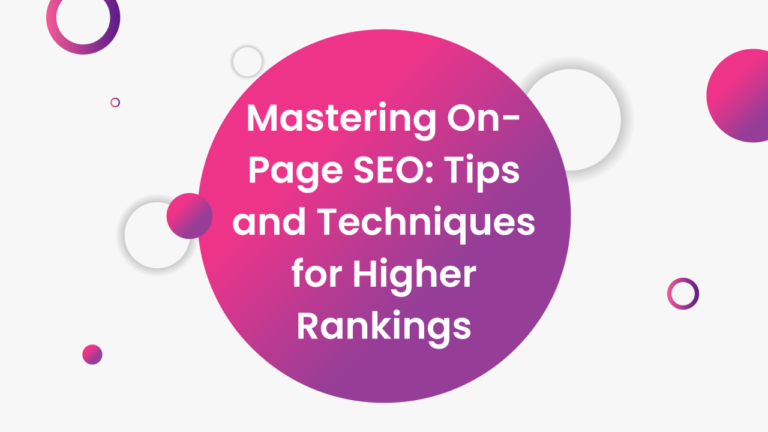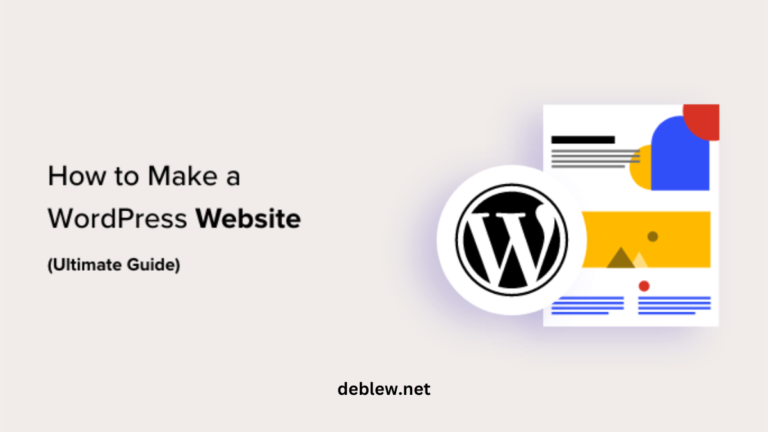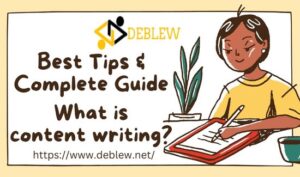How to Write a Blog Post That People Will Love
In the vast ocean of the internet, where millions of blog posts are published every day, it can be challenging to stand out and capture the attention of readers. However, with the right approach and a touch of creativity, you can craft blog posts that people will love to read and share.
This article aims to provide you with valuable tips and insights on how to write captivating blog posts that resonate with your audience.
Understanding Your Audience
In the world of blogging, one of the most critical factors for success is understanding your audience. When you know who your readers are and what they’re looking for, you can create content that resonates with them on a deeper level. This section will guide you through the process of understanding your audience and identifying their pain points.
Defining your target audience
Demographics and interests
To effectively connect with your audience, you must first define who they are. Start by gathering demographic information such as age, gender, location, education level, and occupation. Understanding these details will help you tailor your content to suit their preferences and needs.
Additionally, delve into their interests and hobbies. Are they tech-savvy individuals interested in the latest gadgets and trends? Are they passionate about health and wellness? Knowing their interests will give you valuable insights into the type of content that will engage them.
Analyzing audience behaviour
Besides demographics, understanding your audience’s behaviour is essential. Utilize website analytics tools to track metrics like page views, time spent on pages, bounce rate, and conversion rates. These insights can reveal which topics and types of content resonate the most with your readers.
Pay attention to the comments and feedback you receive. Engaging with your audience and responding to their comments can help you gain a deeper understanding of their preferences and pain points.
Identifying their pain points
Conducting surveys and research
Surveys are a powerful tool to directly collect feedback from your audience. Create surveys that focus on their interests, challenges, and what they hope to achieve. Ask open-ended questions to allow respondents to provide detailed answers, giving you valuable qualitative data.
Apart from surveys, conduct research on industry trends and challenges that your audience might be facing. Stay up-to-date with relevant news and developments to understand their changing needs and pain points.
Utilizing social media listening tools
Social media platforms are treasure troves of information about your audience’s preferences and pain points. Utilize social media listening tools to monitor conversations, mentions, and hashtags related to your niche. This will give you real-time insights into what your audience is talking about, what problems they are facing, and what they are interested in.
Engage in discussions on social media to build a rapport with your audience and encourage them to share their thoughts and challenges.
Understanding your audience’s demographics, interests, and behaviour will help you tailor your content to suit their preferences. Identifying their pain points allows you to create blog posts that address their specific needs, making your content more valuable and relevant to them. By consistently providing content that resonates with your audience, you’ll not only attract more readers but also build a loyal and engaged community around your blog.
Crafting Compelling Headlines
The role of headlines in attracting readers
The headline of your blog post is the gateway to your content. It serves as the first impression, and in the fast-paced digital world, it can make or break whether a reader clicks through to read your article.
A compelling headline has the power to grab the reader’s attention and entice them to explore further. It acts as a preview, giving readers a glimpse of what they can expect from your post. Without an attention-grabbing headline, even the most valuable content might go unnoticed.
Tips for creating click-worthy headlines
Using powerful words and emotions
Words have the power to evoke emotions, and emotions drive actions. Utilize strong, emotional words that resonate with your target audience. For example, words like “ultimate,” “essential,” “unbelievable,” “life-changing,” and “proven” can create a sense of urgency and intrigue.
Consider the emotional aspect of your content and align your headline with the primary emotion you want to evoke. Whether it’s excitement, curiosity, fear, or joy, the right emotional trigger can compel readers to click and read on.
Keeping it concise and clear
Online readers have limited attention spans, and a long-winded headline may get lost in the noise. Keep your headlines concise and to the point, ideally under 70 characters to ensure they display fully in search engine results.
Communicate the main benefit or takeaway of your blog post in the headline. Avoid vague or misleading language, as it can lead to disappointed readers and hurt your credibility.
Adding numbers and asking questions
Numbers add specificity and make your headline more tangible. Readers appreciate knowing what to expect, and headlines with numbers promise actionable tips or a list of valuable insights. For instance, “10 Proven Ways to Boost Your Productivity” or “5 Delicious Recipes for a Healthy Breakfast.”
Questions, on the other hand, pique curiosity and encourage readers to seek answers within your blog post. Address a common problem or concern your audience might have in the form of a question. For example, “Struggling to Sleep? Discover the Secrets to a Restful Night.”
Mastering the Introduction
Importance of a strong hook
The introduction of your blog post is like the front door of your house. It’s the first thing your readers encounter, and it sets the tone for the entire reading experience. A strong hook in your introduction is essential because it captures the reader’s attention and compels them to keep reading. Without a compelling hook, readers might lose interest and click away, missing out on the valuable content you have to offer.
Your hook should be engaging, intriguing, and relevant to the content that follows. It should create an emotional connection or spark curiosity, making readers eager to explore further. Mastering the art of crafting a strong hook can significantly impact the success of your blog post.
Different approaches to captivating introductions
Anecdotes or personal stories
Humans are wired to connect with stories. Sharing a personal anecdote or story that relates to your blog post’s topic can instantly captivate readers. It adds a human touch to your content and helps readers relate to your experiences. Personal stories can be powerful tools to convey your message and make your blog post more memorable.
For example, if your blog post is about overcoming challenges in a specific field, you could start with a story about how you faced and conquered a similar obstacle.
Surprising statistics or facts
Numbers can be attention-grabbing, especially when they reveal surprising information. Start your introduction with a relevant and eye-opening statistic or fact related to your blog post’s topic. Surprising your readers with compelling data will instantly intrigue them and encourage them to read further.
For instance, if your blog post is about the impact of plastic pollution on marine life, you could begin with a staggering statistic about the number of plastic bottles ending up in the ocean each day.
Thought-provoking questions
Asking thought-provoking questions in your introduction engages readers by stimulating their curiosity. A well-crafted question encourages readers to reflect on their own experiences or knowledge, making them more receptive to the insights you’ll be sharing in the blog post.
Let’s say your blog post is about healthy eating habits. You could start with a question like, “Have you ever wondered how small changes in your diet can lead to significant improvements in your overall well-being?”
Structuring Engaging Content
The significance of a well-organized post
A well-organized blog post is like a well-built house. It provides a solid foundation for your ideas and ensures that your readers can navigate your content effortlessly. A clear and coherent structure is essential for engaging your audience and delivering your message effectively. Without proper organization, your valuable insights might get lost, and readers may struggle to follow your thoughts.
An organized post enhances readability, making it easier for readers to grasp the main points and key takeaways. It also improves user experience, encouraging visitors to spend more time on your blog, which can lead to higher engagement, shares, and return visits.
Tips for creating a coherent structure
Utilizing headings and subheadings
Headings and subheadings act as signposts, guiding your readers through your content. Use clear and descriptive headings that give a preview of the content in each section. Subheadings break down the information further, making it easier for readers to scan and find what interests them.
This hierarchical structure not only enhances readability but also boosts your blog post’s SEO by improving its search engine visibility.
Incorporating bullet points and lists
Walls of text can be intimidating and difficult to digest. Break up your content with bullet points and lists to present information concisely and clearly. Bullet points make it easy for readers to absorb key points at a glance, while lists provide a sense of order and organization.
When outlining steps, tips, or examples, using a numbered or bulleted list is an effective way to present information in a reader-friendly format.
Ensuring a logical flow of ideas
A blog post should read like a cohesive story, with one idea leading naturally to the next. Ensure a logical flow of ideas by organizing your content in a way that builds upon previous points and supports your main message.
Start with a strong introduction that sets the context for your topic, and then gradually develop your ideas in a sequence that makes sense to your readers. Each paragraph should connect to the next, creating a seamless transition between sections.
Crafting Compelling Content
Tips for creating valuable and shareable content
Providing unique insights and perspectives
To create compelling content, aim to offer something different from what’s already available on the internet. Identify your unique strengths, experiences, or knowledge, and use them to provide fresh insights and perspectives on your chosen topic.
Share personal anecdotes, case studies, or real-life examples to illustrate your points and make your content more relatable. Offering unique value establishes you as an authority in your niche and encourages readers to share your content with others.
Backing up claims with credible sources
In the age of misinformation, credibility is paramount. Whenever you make a claim or present data, back it up with reliable and reputable sources. Cite studies, research papers, or expert opinions to support your arguments and ensure your content is trustworthy.
Providing credible sources not only strengthens your content’s reliability but also gives readers additional resources to explore further, making your blog post a valuable reference for them.
Using visuals to enhance understanding
Incorporating visuals, such as images, infographics, charts, and videos, can significantly enhance your content’s appeal. Visuals break up the text and make complex concepts easier to understand.
Visual content also increases the likelihood of social media shares, as eye-catching images or infographics are more likely to grab attention and encourage readers to share your post with their followers.
Maintaining a conversational tone
Building a connection with readers
Blogging is a two-way conversation, even if readers aren’t leaving comments. Write in a friendly and approachable manner, as if you are having a conversation with your readers over a cup of coffee. Address them directly, using “you” and “we,” to make them feel involved.
Share your passion and enthusiasm for the topic, and show genuine interest in helping your readers. When readers feel a connection with you, they are more likely to engage with your content and come back for more.
Avoiding jargon and complex language
While you might be an expert in your field, not all your readers will be. Avoid using jargon and complex technical terms that might alienate a portion of your audience.
Instead, use simple language that is easy to understand. Explain technical concepts clearly and concisely, using analogies or real-life examples to make them relatable.
Adding Visual Appeal
The power of images and multimedia
In the digital age, visuals play a pivotal role in capturing and retaining audience attention. Adding images and multimedia to your blog post can significantly enhance its appeal and impact. Visuals not only break up lengthy blocks of text but also make your content more engaging, memorable, and shareable.
Research shows that humans process visual information faster and more effectively than text alone. Visuals help convey complex ideas, evoke emotions, and create a deeper connection with your audience. They also improve comprehension and retention of information, making your blog post more accessible and enjoyable for readers.
Selecting and optimising visuals for the blog post
Choosing Relevant and High-Quality Images:
Select visuals that directly relate to your blog post’s content and reinforce your message. High-quality images grab attention and contribute to a professional appearance.
Consider using stock photos, illustrations, or original images that align with your brand and resonate with your target audience. Avoid using generic or overused images that might dilute the uniqueness of your blog post.
Incorporating Infographics and Charts:
Infographics and charts are powerful tools for presenting data, statistics, or complex information in a visually appealing and digestible format. They are perfect for summarizing key points and making your content more shareable on social media.
Create custom infographics or use reputable resources to find visually compelling charts that support your content.
Using Videos and Multimedia:
Videos are highly engaging and can add depth to your blog post. Consider embedding relevant videos, such as tutorials, interviews, or demonstrations, to enrich your content.
Additionally, consider using multimedia elements like audio clips, slideshows, or interactive elements to create an immersive experience for your audience.
Optimising Visuals for Web Use:
Large images can slow down your blog’s loading speed, negatively impacting the user experience and SEO. Optimize your visuals by resizing them to an appropriate web-friendly resolution.
Use image compression tools to reduce file sizes without compromising quality. Also, ensure that your visuals are in a web-friendly format, such as JPEG or PNG, for optimal performance.
Adding Alt Text and Descriptions:
Alt text provides descriptive text for images, making them accessible to people with visual impairments and improving SEO. Include relevant keywords in the alt text to help search engines understand the content of your visuals.
Write concise and descriptive captions or descriptions for your visuals, providing context and further engaging your audience.
Respecting Copyright and Licensing:
If you’re using images or multimedia from external sources, always respect copyright laws and licensing agreements. Ensure you have the right to use the visuals on your blog and provide proper attribution when required.
Injecting Personality and Voice
Developing a unique blogging voice
In the vast sea of bloggers, developing a unique blogging voice is crucial to stand out from the crowd and connect with your audience on a deeper level. Your blogging voice is your writing style, personality, and the way you express yourself through your content. It reflects who you are as a person and what sets you apart from other bloggers in your niche.
A distinctive blogging voice not only makes your content more memorable but also helps to build a loyal readership. When your audience recognizes your voice, they feel a sense of familiarity and trust, making them more likely to engage with your blog and share your content with others.
Tips for injecting personality into the writing
Sharing personal experiences
One of the most effective ways to inject personality into your writing is by sharing personal experiences and insights. Whether it’s a success story, a lesson learned, or a moment of vulnerability, personal anecdotes make your content relatable and authentic.
When you share personal experiences, you create a genuine connection with your audience, allowing them to see the person behind the blog. This transparency builds trust and fosters a stronger relationship with your readers.
Using humour and storytelling
Humour is a powerful tool to engage readers and keep them entertained. Injecting wit, clever wordplay, or a well-timed joke can bring a smile to your readers’ faces and make your content enjoyable to read.
Additionally, storytelling adds depth and emotion to your writing. Craft narratives that illustrate your points, draw readers into your world and make them feel a part of the story. Well-told stories evoke empathy and resonate with readers, leaving a lasting impact.
Keeping the Reader Engaged
Writing for scanners and skimmers
In the fast-paced digital world, readers often skim and scan content rather than reading it word-for-word. To keep your audience engaged, it’s essential to write with scanners and skimmers in mind. By presenting information in a reader-friendly format, you increase the likelihood of capturing their attention and encouraging them to explore your content further.
Tips for Writing for Scanners and Skimmers:
- Use Descriptive Headings and Subheadings: Clear and descriptive headings and subheadings help readers quickly identify the main points of your content. They can easily navigate to the sections that interest them the most.
- Use Bullet Points and Lists: Breaking up information into bullet points or lists makes it easy for readers to absorb key details at a glance. This format also helps in organizing information logically.
- Highlight Key Takeaways: Emphasize important points or key takeaways using bold text, italics, or block quotes. This draws the reader’s attention to the essential information even when scanning.
- Write Concisely: Keep your sentences and paragraphs concise. Use simple language to convey your message effectively.
- Utilize Visuals: Incorporate visuals such as images, infographics, and charts to supplement your content and provide visual breaks for scanners.
Employing interactive elements
Engaging your readers goes beyond the text on the page. By incorporating interactive elements into your blog posts, you can create a dynamic and immersive experience that encourages readers to actively participate.
Call-to-action (CTA) buttons
CTA buttons prompt readers to take specific actions, such as subscribing to your newsletter, following you on social media, or exploring related content. Place these buttons strategically within your blog post to guide readers towards further engagement.
For example:
- “Subscribe Now for Weekly Updates!”
- “Follow us on Instagram for Daily Inspiration!”
Surveys, quizzes, and polls
Interactive elements like surveys, quizzes, and polls invite readers to share their opinions and engage with your content actively. These elements can be entertaining and informative, making readers feel involved in the discussion.
For example:
- “Take our quiz to find out your personality type!”
- “Vote on your favourite summer destination in our poll!”
Encouraging reader participation through interactive elements not only keeps them engaged but also provides you with valuable feedback and insights into their preferences.
The Importance of Editing and Proofreading
Ensuring clarity and coherence
Editing and proofreading are essential steps in the blog writing process. They go beyond checking for spelling and grammar errors; they ensure that your content is clear, and coherent, and delivers your message effectively. While writing, it’s easy to overlook mistakes or unclear phrasing, which can lead to misunderstandings and a negative reader experience.
Benefits of Editing and Proofreading:
- Enhanced Readability: Editing improves the flow and structure of your content, making it easier for readers to follow your ideas and grasp the main points.
- Professionalism: Error-free writing showcases your professionalism and attention to detail, enhancing your credibility as a blogger.
- Better Engagement: A well-edited and proofread blog post keeps readers focused and engaged, encouraging them to read the entire article.
- Improved SEO: Error-free content is more likely to rank higher in search engine results, increasing your blog’s visibility and attracting more readers.
Tools for effective editing and proofreading
To ensure the quality of your blog posts, take advantage of various editing and proofreading tools available. These tools can help you catch mistakes, improve sentence structure, and enhance the overall readability of your content.
Grammar and Spelling Checkers:
Grammarly: A popular grammar checker that identifies grammar, spelling, punctuation, and style issues. It offers browser extensions and integrations with various platforms.
Hemingway Editor: This tool highlights complex sentences, passive voice, and adverbs, helping you simplify and tighten your writing.
Read-Aloud:
Reading your blog post aloud can help you identify awkward phrasing, word repetition, and unclear sentences. It allows you to experience your content from a reader’s perspective.
Time Gap:
After finishing your blog post, take a break before starting the editing and proofreading process. A fresh look at your writing will make it easier to spot errors and inconsistencies.
Peer Review:
Ask a friend, family member, or fellow blogger to review your post. A second set of eyes can catch errors you might have missed and provide valuable feedback on the clarity of your content.
Manual Review:
Edit and proofread your blog post manually, focusing on grammar, sentence structure, word choice, and overall coherence. Pay attention to the flow of ideas and ensure that each paragraph contributes to the main message of the post.
FAQs (Frequently Asked Questions)
Conclusion
Writing blog posts that people will love requires a combination of understanding your audience, crafting engaging content, and injecting your unique personality.
By creating value, establishing a connection with readers, and continuously improving your writing, you can captivate your audience and build a loyal following. Keep experimenting, be authentic, and always aim to provide content that resonates with your readers. Happy blogging!





